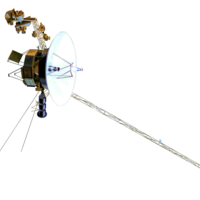Voyager 1 adventures
- Track: Free Software Radio devroom
- Room: D.radio
- Day: Sunday
- Start: 15:00
- End: 15:30
- Video with Q&A: D.radio
- Video only: D.radio
- Chat: Join the conversation!

Voyager 1 is the furthest spacecraft and the first ever to exit the solar system. Fueled by its radioisotope generators, after more than 40 years of flight it is still sending us data about the interstellar medium using its 3.7 metre dish antenna and 8.4 GHz transmitter. In this talk we report two adventures regarding the reception of the Voyager 1 signal.
In the first part, we show the successful detection of the Voyager 1 signal using one of the 6.1 metre dishes at the Allen Telescope Array in November 2020. Calculations show that using stable frequency references and accurate Doppler correction, this feat might also be possible for amateurs with smaller dishes if they integrate several hours of data to pull out the very weak signal from the noise. In the second part, we use some recordings done by the 100 metre Green Bank Telescope in 2015 and 2020 to decode the data transmitted by Voyager 1. The spacecraft predates the modern CCSDS standards, so its data has some interesting aspects.
All this work has been done using GNU Radio, Python, and other open source tools. The data and results are publicly available.
Speakers
| Daniel Estévez |